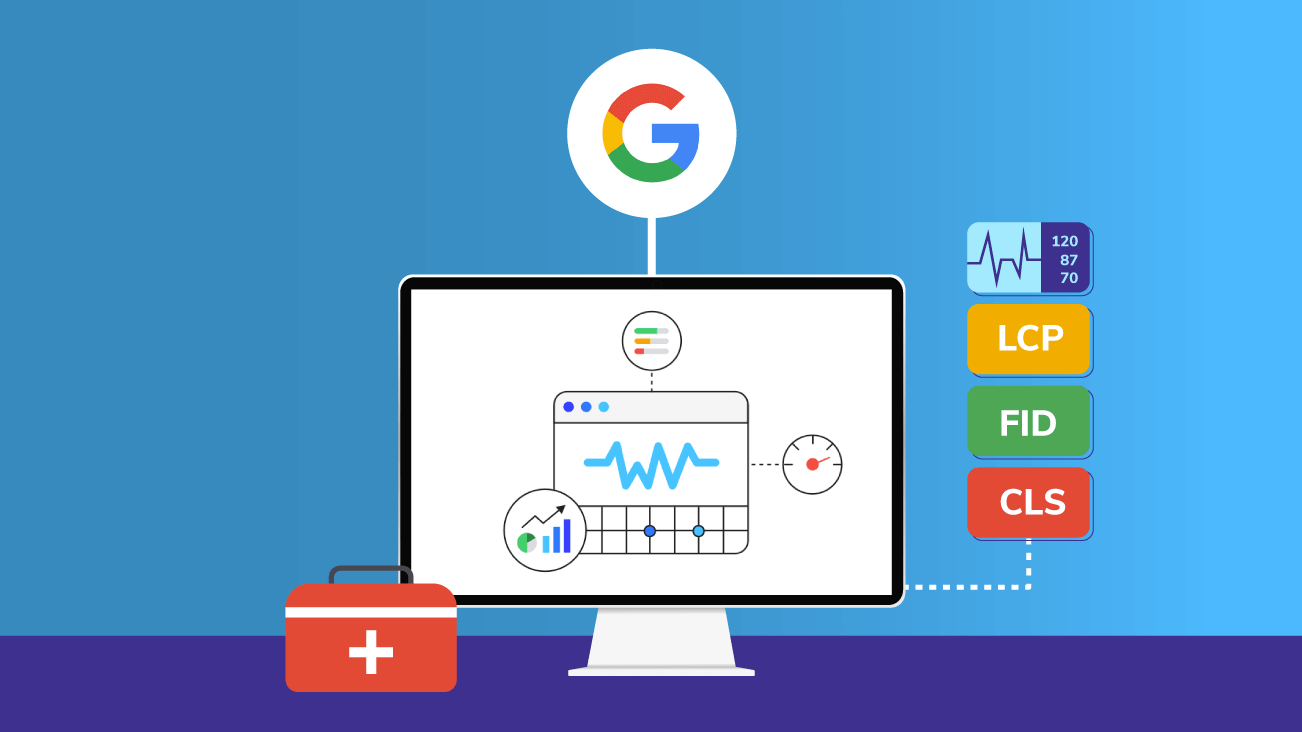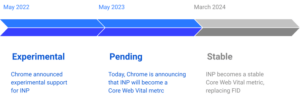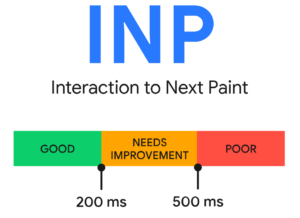
Important Change to Core Web Vitals from March 2024: INP replaces FID
At the end of April 2023, we reported on Google’s Core Web Vitals on our FireStorm blog. In the article entitled “Everything you need to know about Google’s Core Web Vitals“, you can find lots of interesting information about the three Core Web Vitals metrics. However, just two weeks after the article was published, Google announced a change to the Core Web Vitals. On the Google Search Central blog, the US company announced that the new INP metric will replace the current FID metric from March 2024. In this article, we therefore want to explain to you what exactly FID is in the Core Web Vitals and what this will change for website operators. – Now we hope you enjoy reading this article!
 In March 2023, Google will be making changes to the Core Web Vitals. In this article, we explain everything you need to know so that you can best prepare for these changes and make your website fit for them.
In March 2023, Google will be making changes to the Core Web Vitals. In this article, we explain everything you need to know so that you can best prepare for these changes and make your website fit for them.
Summary: What are Google’s Core Web Vitals?
In the detailed article about all of Google’s Core Web Vitals, we have already explained in more detail what the Core Web Vitals actually are. We will therefore only describe them again in one sentence here: Core Web Vitals are field data collected when your website is used, which Google analyzes in order to evaluate the user experience.
What changes will there be to Core Web Vitals in 2024?
Previously, Google’s Core Web Vitals included the following three factors: 1) Largest Contentful Paint (LCP), 2) First Input Delay (FID) and 3) Cumulative Layout Shift (CLS). You can also find out what these three metrics mean and how you can optimize these Core Web Vitals in the corresponding post from April 2023 on our blog. In March 2024, however, the First Input Delay (FID) will be replaced by the Interaction to Next Paint (INP). The first experiments on this started back in May 2022, before Google announced in May 2023 that INP would become a Core Web Vitals metric.
 Google’s official roadmap for the Core Web Vitals change, or the replacement of the FID with the INP, was made available to the public on May 10, 2023 at developers.google.com.
Google’s official roadmap for the Core Web Vitals change, or the replacement of the FID with the INP, was made available to the public on May 10, 2023 at developers.google.com.
What is the Interaction to Next Paint in the Core Web Vitals?
Interaction to Next Paint, or INP for short, evaluates the responsiveness of your website using data from the Event Timing API. Interaction to Next Paint analyzes the latency of all interactions of your website visitors with your website. After the analysis, a single time value in milliseconds is output as INP, below which all or almost all interactions of your website visitors with your website were.
Consequently, a low Interaction to Next Paint value means that your website can respond quickly to all or most of the interactions of your website visitors. All INP values of less than 200 milliseconds are good and all INP values of more than 500 milliseconds are bad. The worst-case scenario is, of course, interactions that result in your website no longer responding at all after your website visitors have interacted with it.
 The Interaction to Next Paint (INP) indicates how quickly your website responds and monitors the latency of all interactions that a user has made with your website
The Interaction to Next Paint (INP) indicates how quickly your website responds and monitors the latency of all interactions that a user has made with your website
How can I optimize the Interaction to Next Paint (INP)?
As the Core Web Vitals change is not due until March 2024, we are of course unable to share our own experiences in this article. However, Google writes that the change to the Core Web Vitals should not bring any major changes for website operators. This is because the INP is simply an improved FID value. Therefore, websites that already have a good response speed and a good FID value should also have a good INP value. However, Google has already published a detailed article on optimizing the Interaction to Next Paint (INP) under the title “Optimize Interaction to Next Paint“, which we can definitely recommend.

 In March 2023, Google will be making changes to the Core Web Vitals. In this article, we explain everything you need to know so that you can best prepare for these changes and make your website fit for them.
In March 2023, Google will be making changes to the Core Web Vitals. In this article, we explain everything you need to know so that you can best prepare for these changes and make your website fit for them. Google’s official roadmap for the Core Web Vitals change, or the replacement of the FID with the INP, was made available to the public on May 10, 2023 at developers.google.com.
Google’s official roadmap for the Core Web Vitals change, or the replacement of the FID with the INP, was made available to the public on May 10, 2023 at developers.google.com. The Interaction to Next Paint (INP) indicates how quickly your website responds and monitors the latency of all interactions that a user has made with your website
The Interaction to Next Paint (INP) indicates how quickly your website responds and monitors the latency of all interactions that a user has made with your website